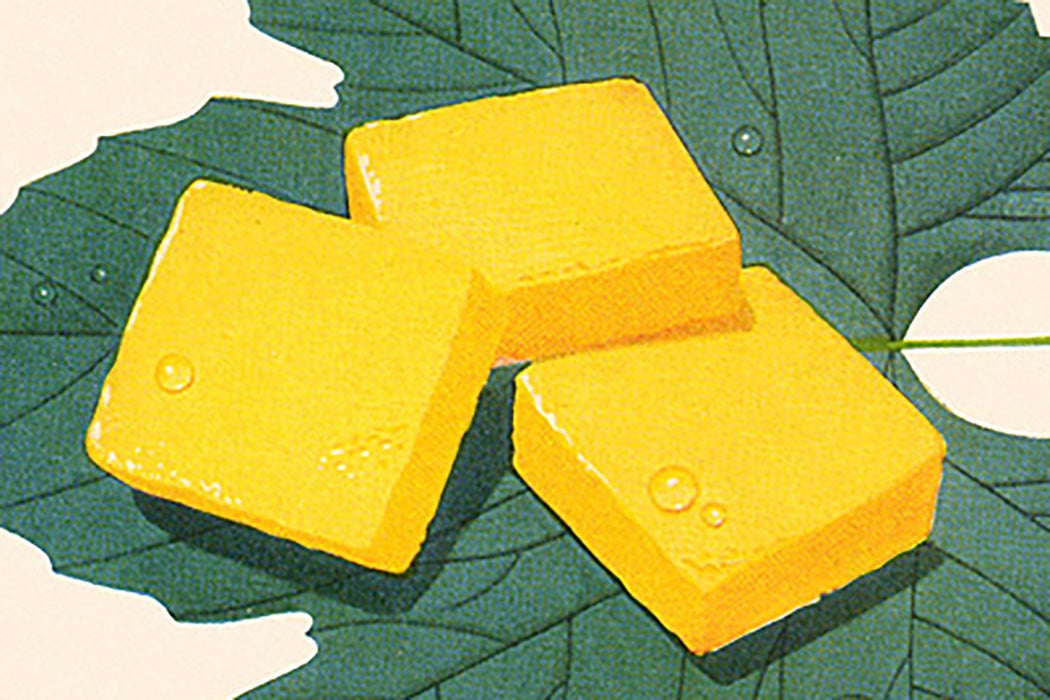Wisconsin, 1966: An elderly woman gets into her car in Sheboygan for the 100-mile trip south on Highway 41. She stops just across the Illinois border at a gas station, where she hands a wad of cash to the attendant. She puts a large brown box into the trunk. On the way home, she drives slowly and carefully, worried that she might be pulled over. She is smuggling notorious contraband: yellow oleomargarine, a butter substitute outlawed for more than 70 years in America’s Dairyland.
The 1960s marked the end of the Oleo Wars, a nationwide struggle between agriculture and industry that sparked decades of protests, new state and federal laws, Supreme Court cases, and an active black market. By the mid 60s—when Wisconsin was the only state still prohibiting the sale or use of oleomargarine—Illinois gas stations near the state line sold as much as a ton a week to Wisconsinites, some of them dairy farmers, who wanted a cheaper, more modern alternative to butter. Although the oleomargarine bootleggers faced fines of up to $6,000, there’s little evidence that the law was ever enforced.
Oleomargarine was first introduced in Europe nearly a century earlier, in response to rapidly increasing dairy prices. Inspired by a prize offered by the French government at the Paris World Exhibition for an affordable butter substitute, a French chemist created a product made primarily of margaric, a recently identified fatty acid, from beef fat. Margarine production began in the United States in 1875; by 1886, at the behest of the threatened dairy industry, 24 states had passed laws restricting the production, sale, or use of margarine, and the federal Oleomargarine Act imposed taxes and production fees on the product.
Wisconsin passed the first of its anti-margarine laws in 1881. The state was transitioning from wheat producer to dairy producer. That act required that margarine be clearly labeled as such, though it is unlikely that margarine producers saw benefit in being confused with the emerging local butter industry. In Chicago markets, Wisconsin butter was then known as “western grease” and sold only as lubricant. In 1895, the state passed a more sweeping act, which, among other things, prohibited the manufacture and sale of margarine dyed a buttery yellow, a popular restriction. (Ironically, butter was often also dyed “butter yellow” to mimic the color produced by spring milk.) Wisconsin would add many more laws protecting the dairy industry in the coming years.
This state and federal legislative fusillade—in Wisconsin and elsewhere—and the court challenges that followed continued through the first half of the twentieth century, pitting farmer against scientist on questions of what was natural, healthy, and safe. For consumers, the question seemed to be one of simple economics: When margarine was cheaper or more readily available, as during World War II rationing, consumption increased. By the end of the war, “white butter” was widely accepted, especially for cooking and baking.
Responding to consumer preferences, the federal government repealed its margarine taxes in 1950, and most states followed suit. But not Wisconsin, which continued to ban colored margarine. Pro-butter advocates argued that the law protected the reputation of butter, which was now central to the state’s economy. Pro-margarine advocates pointed out the law was unenforceable after the surrounding states had eased their restrictions.
When the legislature finally voted to repeal the ban in 1967, it did so with some caveats. Under the 1967 act repealing the ban, restaurants are forbidden from serving margarine instead of butter unless the customer specifically requests it. Efforts to repeal that law in 2011 failed. The penalty for a first offense: a fine of up to $500 and up to 3 months in the county jail.
Wisconsin, 2017: Waukesha resident Jean Smith is driving home from visiting family in Nebraska. Before she crosses the state border, she stops at a grocery store for 20 bricks of Irish Kerrygold butter, the sale of which is forbidden under Wisconsin butter grading requirements, which were imposed during the early twentieth century “Margarine Scare.” Smith isn’t worried about being caught with her dairy contraband, though. She has filed a legal challenge to the Wisconsin law.







